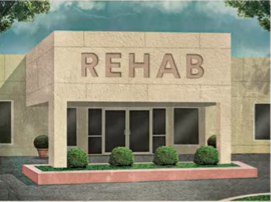As things stand, science has accumulated a fair amount of research on Cannabis Use Disorders (CUD), but far less on what happens when someone commits to and ‘succeeds’ in establishing a stable recovery – either through abstinence or by reducing their consumption to the point where it no longer represents a problem in their lives. And stays that way, for an extended period.
One way to research the subject is by interviewing former users who meet criteria for stable recovery, gathering information about what worked for them and of course, what didn’t. Though it’s still early days, I did come across a study that can serve as an example. It doesn’t answer all our questions, by any means. It does seem like a promising way to examine the recovery process itself.
In this study, 119 subjects were identified as having had problems with cannabis in the past — but none in the previous year. The sample seems to have been divided between half who practiced abstinence from cannabis and another half that acknowledged some continued use, at least occasionally. The interviews used open-ended questions (the ones that can’t be answered ‘yes or no’, but require some explanation) to encourage expanded, more detailed responses.
Here’s a link to the article describing the findings.
Insights from individuals successfully recovered from cannabis use disorder: natural versus treatment-assisted recoveries and abstinent versus moderation outcomes
We should note that the study sample was 70% male (a ratio that isn’t uncommon in outpatient programs). Mean age of first cannabis use was just below 15 years, with a mean age of onset for CUD at around age 20. Though the minimum length in recovery was just twelve months, the median among the participants was a far more substantial five years — suggesting a population that was likely to continue its success.
Subjects were asked to describe their perceptions of how their problem developed, how they addressed it, and what advice they might offer to others in similar straits.
Differences between those who had received treatment and those who hadn’t emerged quickly. It wasn’t difficult to see the influence of treatment on people’s thinking. Those who’d been through treatment were more likely to attribute their cannabis use to factors such as challenges in coping, genetic predisposition, and other recognized vulnerabilities. That’s the kind of information people get from treatment. Those who hadn’t gone through treatment were prone to emphasize issues such as a desire to have fun, feelings of boredom, and generally positive personal perceptions of cannabis use — things we often pick up from our association with friends and classmates. And in today’s world, of course, from the Internet, particularly social media.
As for keys to success in recovery, both groups emphasized commitment to change and the ability to overcome denial in order to acknowledge the existence of a cannabis problem. But where the treatment group focused on involvement in counseling and self-help groups, those that hadn’t gone through treatment were more likely to emphasize personal traits such as willpower and a sense of purpose, as well as the desire to enjoy life without having to depend on a drug.
Accordingly, the non-treatment folks focused on the need to find new hobbies and activities to fill empty time, and also the importance of avoiding certain associates (such as other cannabis users) and making various changes in lifestyle and environment.
In fact, the majority of study participants in both groups said they would recommend professional treatment to others who wanted to follow in their footsteps. Its value, they believed, was mostly in terms of reaffirming one’s commitment to change – a key ingredient in recovery, and an area where treatment often excels.
In a way, this study, like some others before it, seems to reinforce the value of professional help and social support for recovery, while acknowledging other paths to success.
For most, treatment is still the smart choice, even if it’s not the only one.













